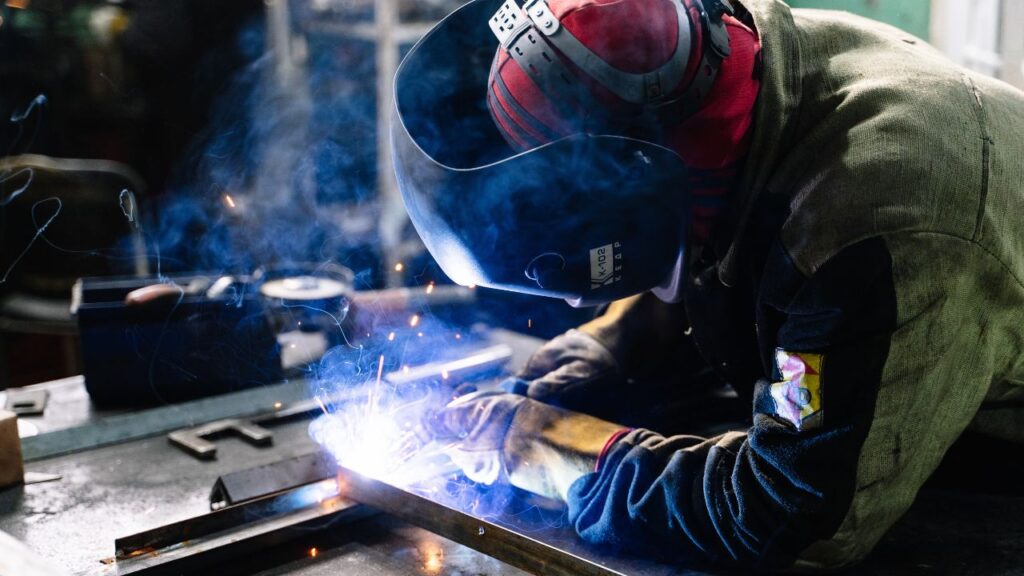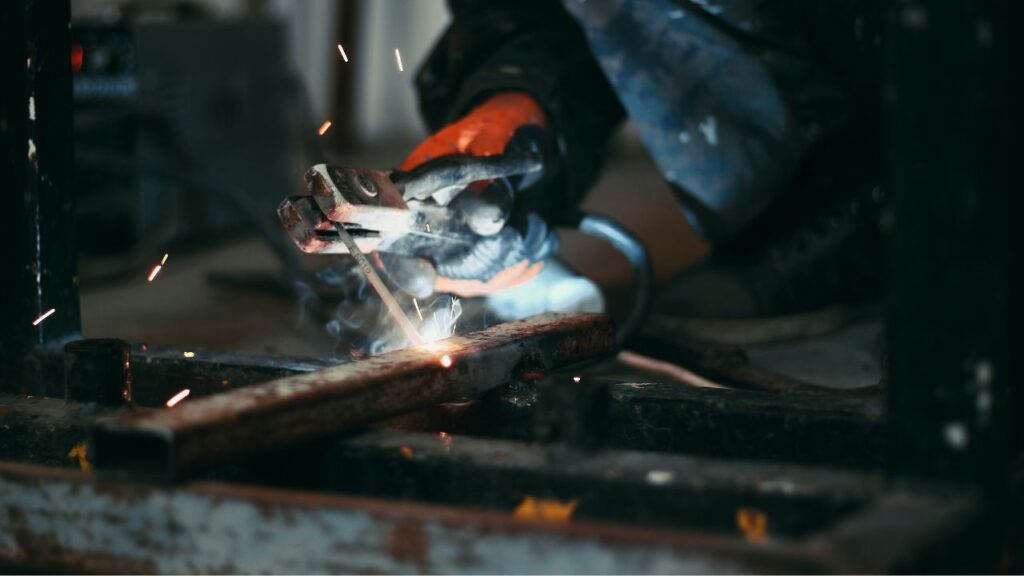Welding is a transformative process that has played a pivotal role in shaping the modern world. It’s the art of joining metals together to create everything from skyscrapers to intricate sculptures.
One of the fundamental aspects of welding is understanding the various types of welding joints, each tailored to specific applications and requirements.
In this comprehensive guide, we will delve deep into the world of welding joints, exploring their types, applications, and the techniques involved.
Different Types of Welding Joints
1) Butt Joint
The butt joint is perhaps the most basic and commonly used type of welding joint.
In a butt joint, two pieces of metal are aligned in a straight line, and the weld is applied to the area where their edges meet. This type of joint is widely used in industries such as construction and automotive manufacturing.
Butt joints can be further categorized into three subtypes:
a. Single-V Butt Joint:
In this variant, the edges of the metal pieces are beveled or chamfered, creating a V-shaped groove for the weld. Single-V butt joints are commonly used in pipe welding.
b. Double-V Butt Joint:
Similar to the single-V butt joint but both sides of the metal pieces are beveled to create two V-shaped grooves. This joint offers better penetration and is often used in thick metal applications.
c. Square Butt Joint:
In this case, the edges of the metal pieces are not beveled or chamfered. Square butt joints are typically used for thinner materials.
2) Lap Joint
The lap joint involves overlapping two pieces of metal and welding them together along the overlapping portion.
This joint is ideal for joining metals with varying thicknesses and is commonly used in sheet metal fabrication, making it a crucial joint in industries like aviation and shipbuilding.
Lap joints come in two main variations:
a. Half Lap Joint:
In this joint, each piece of metal is cut halfway through, creating a flush surface when they overlap. It’s commonly used for joining materials of similar thicknesses.
b. Full Lap Joint:
In a full lap joint, one piece of metal overlaps the other completely. This joint is suitable for joining materials of different thicknesses.
3) T-Joint
The T-joint gets its name from its resemblance to the letter “T.” It is formed when one metal piece is perpendicular to the other, and the weld is applied at the point where they intersect.
T-joints are commonly used in the construction of frames, brackets, and other structural components. This joint offers good strength and stability.
4) Corner Joint
Corner joints are formed when two pieces of metal meet at a 90-degree angle. The weld is applied along the outer edge where the two pieces of metal meet.
These joints are frequently used in fabricating boxes, cabinets, and other angular structures. Proper preparation of the edges is crucial to ensure good penetration and a strong weld.
5) Edge Joint
Edge joints are created when two pieces of metal are placed side by side, with the weld applied along the exposed edges. This type of joint is commonly used in sheet metal welding and is ideal for creating seams in applications like ductwork and automotive body panels.
6) Fillet Joint
Fillet joints are characterized by their curved or triangular cross-section. They are formed by welding the metal at the intersection of two other metal pieces, typically at a 45-degree angle.
Fillet joints are widely used in welding applications where strength and load-bearing capacity are essential, such as bridges, pipelines, and machinery.
Corner and Edge Preparation
In welding, proper preparation of the joint is crucial for achieving strong and durable welds. This involves cleaning the joint area to remove any contaminants, such as rust, dirt, or grease, that could compromise the quality of the weld.
Additionally, the edges of the metal pieces may need to be beveled or chamfered to create a groove for the weld metal to flow into, ensuring proper penetration and a secure bond.
Conclusion
Welding is a versatile and indispensable process in various industries, and understanding the different types of welding joints is essential for achieving successful and reliable welds.
From the basic butt joint to the complex fillet joint, each type has its unique applications and requirements.
Whether you’re building a skyscraper or crafting a work of art, the choice of welding joint plays a vital role in determining the strength and durability of the final product.
As technology continues to advance, new welding techniques and joint designs are constantly emerging, further expanding the possibilities of this transformative art.
Also Read: What Are the Most Important Parts of a Car?




BfyYTnCv
Your comment is awaiting moderation.